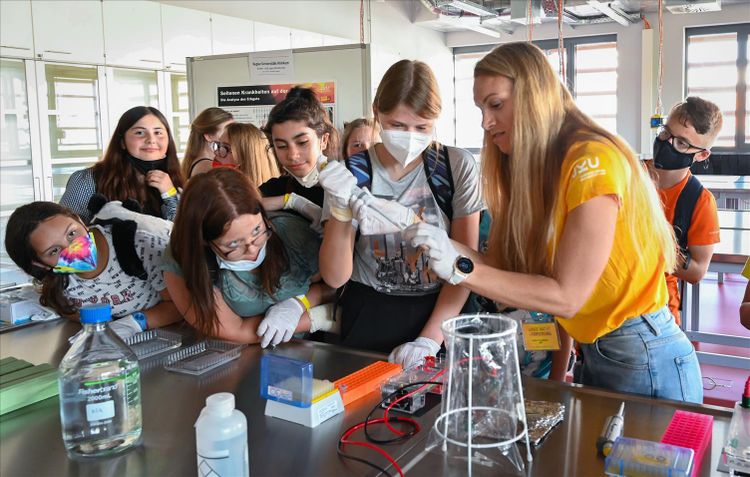In this guest blog physicist Andrea Navarro Quezada talks about the importance of the work done by female scientists.
On December 20th 2013, the United Nations General Assembly recognised the importance of full access to science, technology and innovation for women and girls of all ages in order to achieve gender equality and their empowerment. Since then, the International Day of Women and Girls in Science is celebrated each year on the 11th of February.
Why do we need a day of Women and Girls in Science?
The idea behind it is to draw attention to the fact that despite several measures, women are still far underrepresented in science. Although they make up about 30 percent of all researchers, only 12 percent of the members of the national science academies are women. Moreover, women receive less research funding and recognition than their male colleagues, so that a substantial part of research potential is lost.
The percentage of women that choose to study a STEM subject (mathematics, computer science, natural sciences and technology) is about 25 percent. This percentage hardly changes until doctoral studies and subsequent employment as a research associate, indicating that many of the women who study a STEM subject also pursue a scientific career. However, the great loss of female talent occurs at the time when a career position should be offered leading to habilitation and a professorship. In Austria, only about 16 percentof professors are female and in the European Union the figure is only 21 percent.

The Matilda Effect
A girl in physics class and later in her studies will most likely only hear about the great discoveries of men who have advanced the field. As a female physicist, I am using physics as an example here. But it could just as well be another STEM subject. It is not only men, who have contributed, but there are enough female scientists whose contributions have been crucial to the advancement of the field.
The reason why women in physics do not receive the same recognition as men can be explained by to the so-called Matilda effect, summarized by Margaret W. Rossier as follows: the contribution of women has long been kept quiet by society and closer colleagues - mentors, supervisors, and relatives - who have sometimes taken all the credit for collective works. Women have thus been for years prevented from obtaining recognition.
There are many good examples of female scientists that have been left out of science history, like Mileva Maric, who described the Photoelectric Effect together with her husband Albert Einstein, but only Einstein was awarded the Nobel Prize for it. Or Jocelyn Bell, discoverer of pulsars, whose supervisor Antony Hewisch also received the Nobel Prize for her discovery. And also, Lise Meitner, who made great contributions in the field of radiation physics, was left unrecognized for years by her male colleagues.
Gender equality in Science
It is not easy to change the history of the great discoveries from one day to the next, when there are also very few sources with the contributions of the great women researchers. However, it should be possible for all teachers and professors at schools and universities to change the narrative and give these often-forgotten women scientists a place in their lectures and classes.
In Austria, there are programmes to introduce girls to a career in science and technology, such as Women into Technology (FIT) or Girl's Day, but structural and societal barriers still prevent women from entering and developing a successful scientific career. There is an urgent need to create the right environment for women to develop their potential in order to motivate girls to become leading scientists of the future.
Because progress is not possible without science, and science requires the best minds, both women and men. (Andrea Navarro-Quezada, 11.2.2023)
More blog posts
- The physics behind ducklings swimming formations
- Life after scientific research
- Hydrogen: a versatile gas